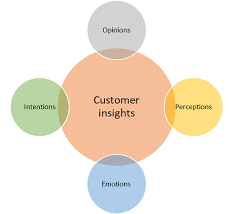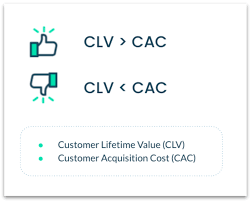In today’s crowded startup landscape, understanding and connecting with customers has emerged as one of the most critical drivers of business success. For angel investors, evaluating a startup’s approach to customer insight and strategy can provide invaluable clues about its potential for growth, sustainability, and profitability. Startups that succeed often have one thing in common: they know their customers well and have built their products and marketing strategies around this knowledge. Here’s how angels can assess a startup’s potential by examining its customer insight and strategy.
1. The Role of Customer Insight in Startup Success
When it comes to early-stage investments, a startup’s core understanding of its target audience is a major indicator of its chances of long-term success. Customer insight goes beyond demographic data; it involves a deep understanding of customers’ needs, values, and behaviors, allowing a startup to craft solutions that resonate with them on multiple levels.

For investors, this means looking for signs that the startup has invested time and effort into learning about its customers. Does the company have a clear idea of who it’s targeting? Can it articulate what drives these customers’ purchasing decisions or the challenges they face? Startups that can demonstrate a rich, nuanced understanding of their target audience are typically better positioned to adapt and grow as the market evolves.
2. Evaluating the Startup’s Customer Knowledge and Segmentation Approach
One of the first things investors should look at is how a startup segments and defines its customer base. Effective segmentation supports clear, targeted marketing and better alignment with customer needs.
Key questions to consider:
- Does the startup have well-defined customer personas for each segment?
- Has it identified specific needs, values, or challenges unique to each segment?
- Is the segmentation strategy multi-dimensional (e.g., demographic, geographic, psychographic, behavioral)?
Common Pitfall:
Be cautious of overly broad or vague segments, and a lack of data-backed research. These may signal a weak understanding of the target market and hinder the startup’s ability to generate consistent revenue.
3. Assessing Product-Market Fit through Customer Strategy
Product-market fit is a critical milestone for startups and refers to how well a product satisfies a clearly identified customer need. A data-driven customer strategy is essential in achieving this. By tailoring the product and its messaging to meet the needs of specific customer segments, a startup can achieve stronger engagement and loyalty.
Questions to ask:
- Does the product solve a genuine problem for the identified target market?
- Has the startup adapted its product based on customer feedback or market research?
- How does the startup gather customer insights? Do they conduct surveys, interviews, or data analysis to validate their assumptions?
Startups that prioritize product-market fit not only attract initial customers but also position themselves for long-term loyalty and growth. As an investor, look for signs of customer-driven decision-making in the startup’s journey.
4. Financial Metrics: CAC, CLV, and Customer Profitability
Understanding how a startup approaches customer acquisition and retention is essential for evaluating its financial health. Metrics like Customer Acquisition Cost (CAC) and Customer Lifetime Value (CLV) provide insight into a startup’s ability to attract and retain customers cost-effectively.

Key metrics to examine:
- Customer Acquisition Cost (CAC): This is the cost of turning a prospect into a paying customer. High CAC relative to CLV might indicate that the startup is spending excessively to gain market traction.
- Customer Lifetime Value (CLV): This metric reflects the total revenue a customer is expected to bring over the course of their relationship with the business. Startups with high CLV relative to CAC generally have more sustainable revenue streams.
- CAC Ratio: A healthy CAC ratio signals that the startup has a profitable customer acquisition strategy. Ideally, this ratio should be around 3:1 (meaning the lifetime value of the customer should be about three times the acquisition cost).
5. Customer Strategy and Retention as Drivers of Long-Term Value
While customer acquisition is essential for growth, retention is where long-term value is created. For investors, evaluating a startup’s retention strategy can help gauge the likelihood of recurring revenue and reduced churn.
Questions to consider:
- How does the startup engage and retain its customers after acquisition?
- Does it have a well-structured customer feedback loop to capture insights and continuously improve?
- What methods does the startup use to measure customer satisfaction and loyalty?
A startup with a strong retention strategy often has processes in place to maintain engagement through personalized interactions, loyalty programs, or regular product updates. A high level of customer satisfaction reduces churn and increases the lifetime value of each customer, offering a better return on investment for both the business and its investors.
A startup with a strong retention strategy often has processes in place to maintain engagement through personalized interactions, loyalty programs, or regular product updates. A high level of customer satisfaction reduces churn and increases the lifetime value of each customer, offering a better return on investment for both the business and its investors.
6. Case Study Example: When Customer Insight Drives Success

BimHealth is a startup in the fitness tech industry targeting health-conscious millennials with a mobile app that tracks workouts and offers virtual training sessions. This startup segmented its customer base not only by demographic (age, income) but also psychographically, targeting individuals motivated by self-improvement and a healthy lifestyle. Through feedback surveys and tracking app usage data, the startup adapted its features to address user preferences—such as incorporating social sharing options and customized training plans.
This customer-driven approach resulted in high user engagement and a low churn rate, with a CLV three times the CAC. The startup’s thorough understanding of its customers allowed it to position itself effectively in a competitive market, making it an appealing choice for angel investors looking for promising, customer-focused startups.
Conclusion: The Value of Customer Insight for Investment Decisions
For angel investors, evaluating a startup’s customer insight and strategy goes beyond analyzing numbers—it’s about understanding how the startup sees and serves its customers. Startups with a well-defined approach to customer understanding, segmentation, and strategy demonstrate a commitment to long-term growth and sustainability. By focusing on startups that are customer-centered and data-driven, investors can better identify opportunities with real potential for meaningful returns.
Investing in a startup with robust customer insight isn’t just a financial decision; it’s a vote of confidence in a founder’s ability to adapt, grow, and succeed in a rapidly evolving market.


